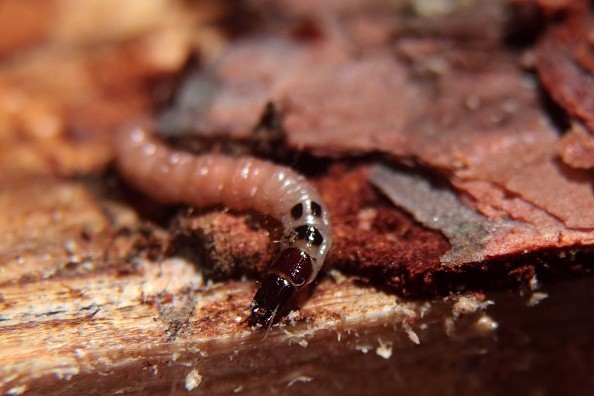An unknown jumping behavior has been recently detected in some insect species, this discovery is considered to be unique and has been occurring in different types of species.

Jumping Behavior in Insects
Previous undocumented jumping behavior was discovered in the larvae of a species of lined flat bark beetle (Laemophloeus biguttatus), according to Phys.org.
Matt Bertone, the corresponding author of a paper on the finding and director of the Plant Disease and Insect Clinic in North Carolina State University said: "Jumping at all is exceedingly rare in the larvae of beetle species, and the mechanism they use to execute their leaps is-as far as we can tell-previously unrecorded in any insect larvae."
The latch-mediated spring actuation mechanism is used by most insects during this spectacular act, this involves the latching body parts while exacting force to build up a significant amount of energy.
These larvae have the ability to spring up while curling themselves into a leap but what makes this really interesting is the ability of the larvae to pull off this stunt without latching body parts like other insects
"What makes the L. biguttatus so remarkable is that it makes these leaps without latching two parts of its body together," Bertone says. "Instead, it uses claws on its legs to grip the ground while it builds up that potential energy-and once those claws release their hold on the ground, that potential energy is converted into kinetic energy, launching it skyward."
How the New Jumping Behavior Was Discovered
Bertone initial plan before this disclosure was to take pictures of the larvae he collected from a rotten tree close to his lab, but he noticed this unusual hopping behavior .
He filmed this for further assessment along with his co-author, Adrian smith a research assistant professor of biological sciences at NC State and head of the Evolutionary Biology & Behavior Research Lab at the North Carolina Museum of Natural Sciences.
Initially, the larvae's jumping pattern was impressive, but researchers were not able to understand how different it was immediately, according to Bertone.
"We then shared it with a number of beetle experts around the country, and none of them had seen the jumping behavior before. That's when we realized we needed to take a closer look at just how the larvae were doing what it was doing."

Further Research on Jumping Behaviors
The researchers film this activity at a 60,000 frame per sec speed rate to capture all the movement associated with the acrobatics.
After much assessments, Bertain concluded that the larvae lack sufficient muscle to hurl themselves into the air as far or as fast as they had been filmed and they latch unto the ground to pull off this stunt.
"We don't have high-speed footage of P. testaceus, but the video evidence we do have from Yoshida's lab suggests that this previously unknown behavior is found in two different genera which are not even closely related," Bertone says referring to the discovery of a japanese researcher, Takahiro Yoshida who also spotted this stunt from a Planconotus testaceus.
Related Article : Trap-Jaw Ants Reveal New Acrobatic Skills
For more news, updates about insects and similar topics don't forget to follow Nature World News!
© 2025 NatureWorldNews.com All rights reserved. Do not reproduce without permission.





